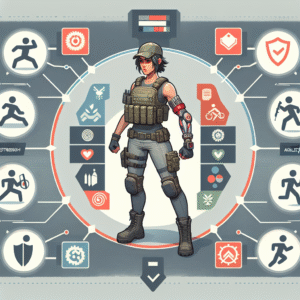Unveiling Hidden Strategies for Mastering Temple Run 2
Understanding the Mechanics of Temple Run 2
Temple Run 2, a sequel to the original Temple Run, has captivated millions with its improved graphics, dynamic environments, and challenging gameplay. To master Temple Run 2, understanding its core mechanics is essential. The game involves navigating a running character through endless paths filled with obstacles while collecting coins and power-ups, all aimed at maintaining the longest possible run distance. The basic controls involve swiping up to jump, down to slide, left or right to turn, and tilting the device to collect coins.
Character Selection and Upgrades
A foundational aspect of mastering Temple Run 2 is character selection and upgrades. Each character in the game has unique abilities and can be unlocked using coins or gems, the in-game currency. Characters like Usain Bolt and Scarlett Fox have specific perks, such as faster running speed or extended duration of power-ups, which can aid in achieving higher scores. Prioritize upgrading abilities that align with your gameplay style. For instance, if you frequently find yourself defeated by environmental obstacles, invest in abilities that enhance shield duration or provide spawn resurrection.
Strategic Coin and Gem Collection
Coins and gems are vital for purchasing characters, abilities, and power-ups. Develop strategies to maximize their collection. Tilting the device consistently allows you to gather coins strewn across pathways, but always prioritize path safety. Utilize power-ups like the Magnet to automatically collect nearby coins, and remember that green gems are key to continuing a run after you’ve hit an obstacle. They are rarer than coins, so collecting them should be a priority.
Mastering Power-ups and Utilities
Power-ups and utilities significantly enhance gameplay, offering advantages such as invincibility, speed boosts, and coin multipliers. Familiarize yourself with each power-up’s function: the Shield protects against obstacles, Coin Magnet draws nearby coins, and Boost propels your character forward without obstruction. Utilities, on the other hand, include items like Mega Boost, Score Multiplier, and Head Start. Proper timing and utilization of these can prolong your run and escalate your score. Using a Head Start right off the bat or activating a Mega Boost during high-intensity sections could be the difference between a good run and a record-breaking one.
Navigating Obstacles and Switching Paths
Temple Run 2’s variety of environments complicates navigation, presenting obstacles such as rivers, zip lines, and narrow paths waiting for a misstep. Anticipation and quick reflexes are crucial; always be prepared to jump, slide, or turn at a moment’s notice. Switching paths, particularly on forks, should be decided based on proficiency and prediction of upcoming obstacles. Building a mental map of typical obstacle locations helps make efficient path-switching decisions.
Maintaining Focus and Building Reflexes
Mental focus and sharpened reflexes are pivotal to survive the fast-paced escalation of Temple Run 2. Distractions, even minor ones, can result in a mistimed jump or slide. Consistent practice enhances hand-eye coordination and reflex responses. Allocate dedicated gameplay time to hone these skills incrementally, tackling increasingly complex obstacle courses with ease over time.
Analyzing Patterns and Recognizing Patterns
Temple Run 2 is not entirely random. Skilled players recognize that certain sequences and patterns frequently recur. Analyzing these patterns allows for preemptive maneuvers—knowing a specific turn might precede a zip line or that followed by a sharp drop preempts a jump. Continuous pattern recognition drastically reduces reaction times, thereby preventing mishaps.
Leveraging In-Game Challenges and Objectives
Temple Run 2 often presents daily and weekly challenges, alongside various in-game objectives. Completing these tasks not only provides satisfaction but also rewards you with coins and gems necessary for upgrades. Regularly check and strategize to complete these challenges, as they often require executing specific maneuvers or collecting certain items that you might typically neglect.
Harnessing the Global Competition
Temple Run 2 amplifies its engagement factor by allowing players to compete globally through leaderboards. This competition can be a strategic motivator to intensify skill development. Observing top players and their runs can offer insights into unexplored techniques or strategies. Additionally, participating in global challenges showcases various emerging gameplay trends, ensuring that your playing style remains fresh and competitive.
Recording and Analyzing Gameplay Sessions
For a more analytical approach, record your gameplay sessions. Review detrimental runs to locate specific points of failure—whether it’s an unnoticed obstacle, mistimed reaction, or ineffective path selection. Identifying these mistakes allows for focused practice on weak areas. Over time, this self-analysis method bolsters overall performance and prevents the recurrence of identified errors.
Conclusion
Mastery of Temple Run 2 demands a blend of skill, strategy, and adaptability. By gaining an intricate understanding of the game’s mechanics, refining reflexes, recognizing patterns, and leveraging in-game features and competition, players can significantly enhance their gameplay experiences and achieve impressive feats.












Post Comment